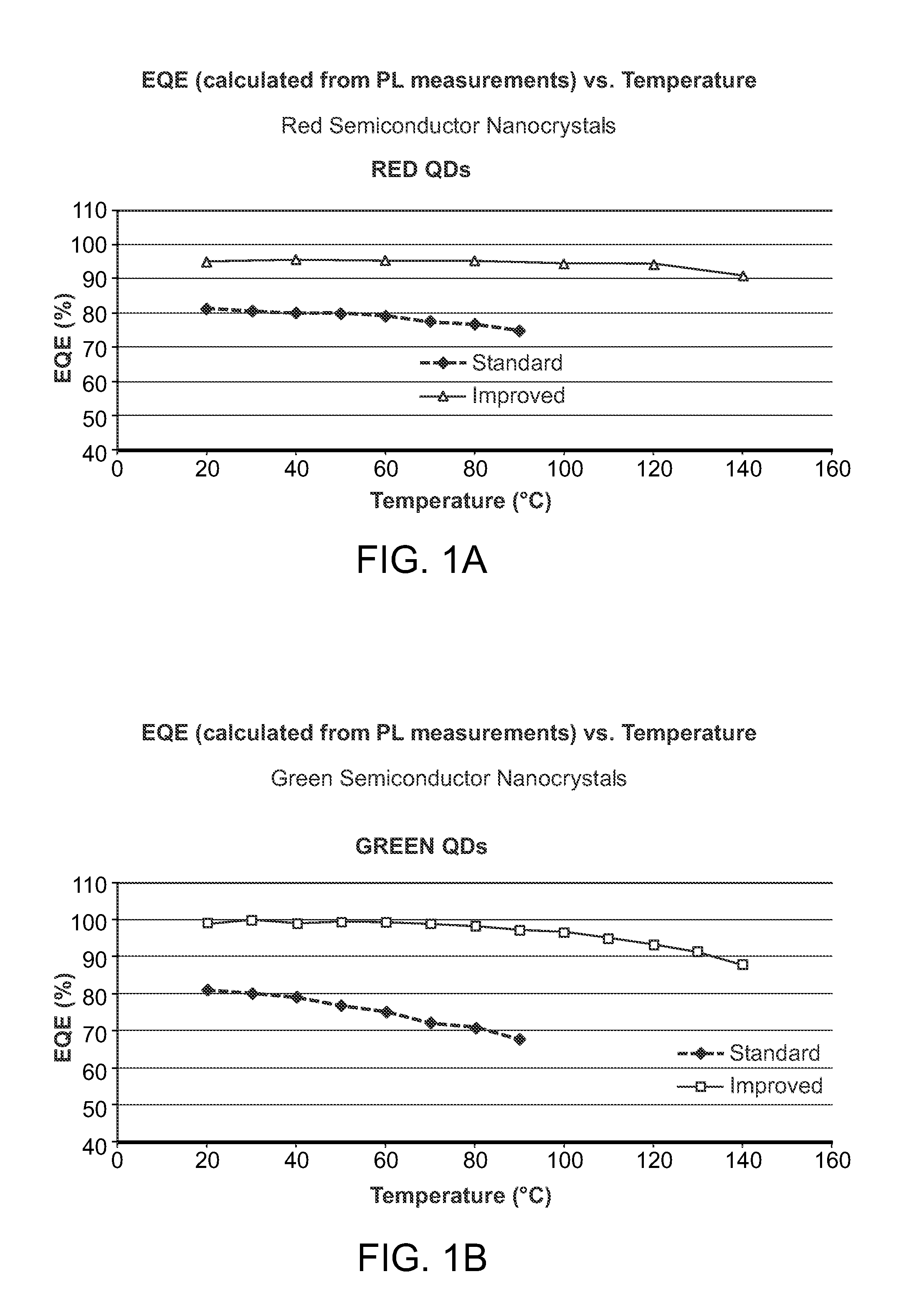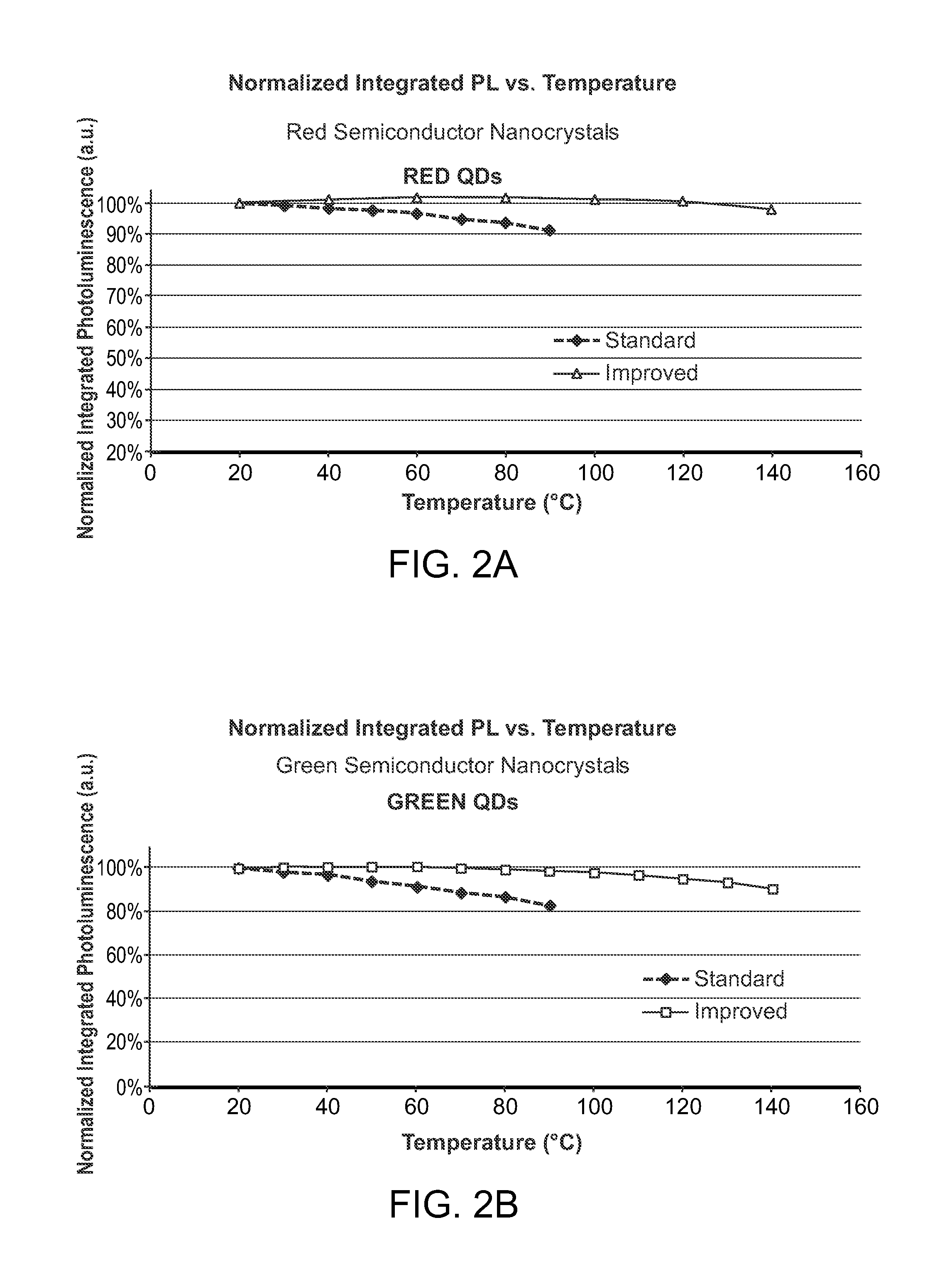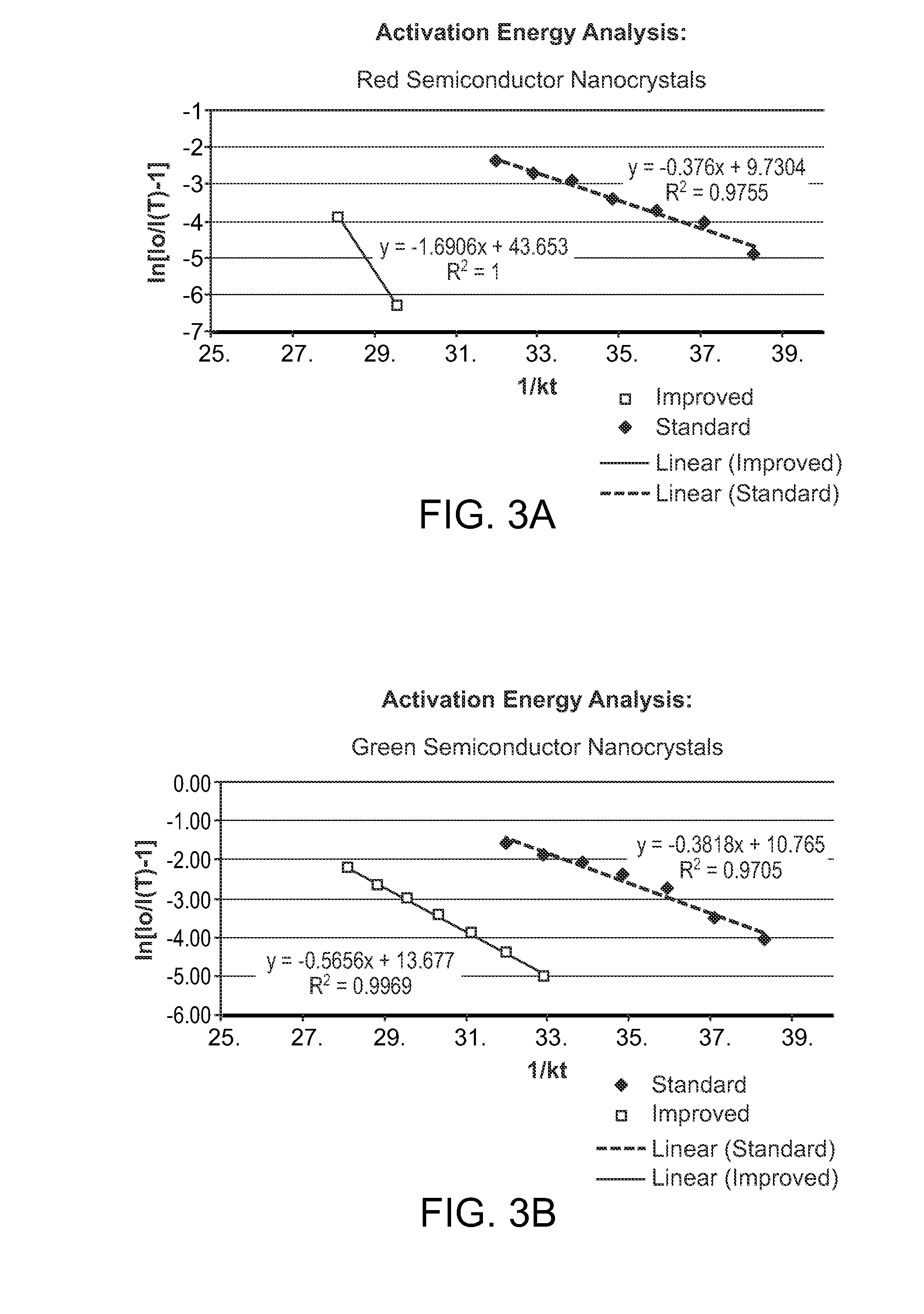Semiconductor nanocrystals, methods for making same, compositions, and products
a technology of semiconductor nanocrystals and nanocrystals, applied in the field of semiconductor nanocrystals, can solve the problems of adverse effects on the external quantum efficiency of solid-state photoluminescence of semiconductor nanocrystals, and achieve the effect of improving the quantum efficiency of semiconductor nanocrystals
- Summary
- Abstract
- Description
- Claims
- Application Information
AI Technical Summary
Benefits of technology
Problems solved by technology
Method used
Image
Examples
example 1
[0248]Following is an example of a preferred embodiment of a method in accordance with the present invention:
example 1a
Semiconductor Nanocrystals Capable of Emitting Red Light
Synthesis of CdSe Cores:
[0249]The following are added to a 1 L glass reaction vessel: trioctylphosphine oxide (17.10 g), 1-octadecene (181.3 g), 1-octadecylphosphonic acid (2.09, 24.95 mmol), and Cd(Oleate)2 (1 M solution in trioctylphosphine, 24.95 mL, 24.95 mmol). The vessel is subjected to 3 cycles of vacuum / nitrogen at 120° C., and the temperature is raised to 270° C. under nitrogen. At 270° C., a solution of 1 M diisobutylphosphine selenide in N-dodecylpyrrolidone (DIBP-Se, 19.46 mL, 19.46 mmol) is rapidly injected, within a period of less than 1 second, followed by injection of 1-octadecene (76.6 mL) to rapidly drop the temperature to about 240° C. resulting in the production of quantum dots with an initial absorbance peak between 420-450 nm. 5-20 seconds after the ODE quench, a solution of Cd(Oleate)2 (0.5 M in a 50 / 50 v / v mixture of TOP and ODE) is continuously introduced along with a solution of DIBP-Se (0.4 M in a 60 / ...
example 1b
Semiconductor Nanocrystals Capable of Emitting Green Light
Synthesis of CdSe Cores (448 nm Target):
[0251]The following are added to a 1 L steel reaction vessel: trioctylphosphine oxide (51.88 g), 1-octadecene (168.46 g), 1-octadecylphosphonic acid (33.09 g, 98.92 mmol), and Cd(Oleate)2 (1M solution in trioctylphosphine, 98.92 mL, 98.92 mmol). The vessel is subjected to 3 cycles of vacuum / nitrogen at 120° C., and the temperature is raised to 270° C. under nitrogen. At 270° C., a solution of 1M diisobutylphosphine selenide in N-dodecylpyrrolidone (DIBP-Se, 77.16 mL, 77.16 mmol) is rapidly injected, within a period of less than 1 second, followed by injection of 1-octadecene (63.5 mL) to rapidly drop the temperature to about 240° C. resulting in the production of quantum dots with an initial absorbance peak between 420-430 nm. 5-20 seconds after the ODE injection, a solution of Cd(Oleate)2 (0.5 M in a 50 / 50 v / v mixture of TOP and ODE) is continuously introduced along with a solution of ...
PUM
 Login to View More
Login to View More Abstract
Description
Claims
Application Information
 Login to View More
Login to View More - R&D
- Intellectual Property
- Life Sciences
- Materials
- Tech Scout
- Unparalleled Data Quality
- Higher Quality Content
- 60% Fewer Hallucinations
Browse by: Latest US Patents, China's latest patents, Technical Efficacy Thesaurus, Application Domain, Technology Topic, Popular Technical Reports.
© 2025 PatSnap. All rights reserved.Legal|Privacy policy|Modern Slavery Act Transparency Statement|Sitemap|About US| Contact US: help@patsnap.com



